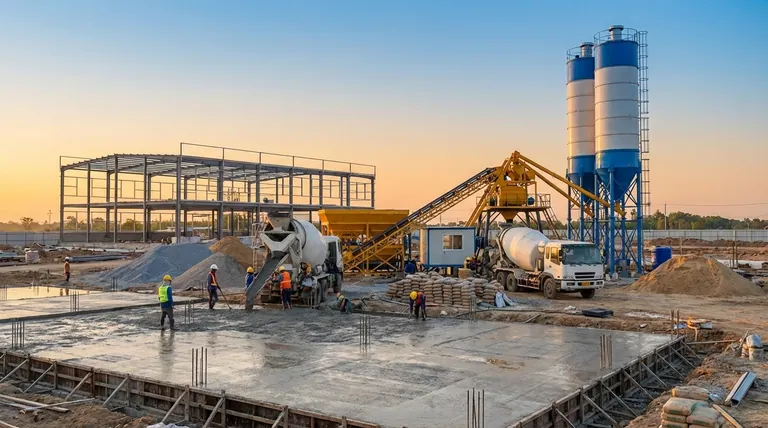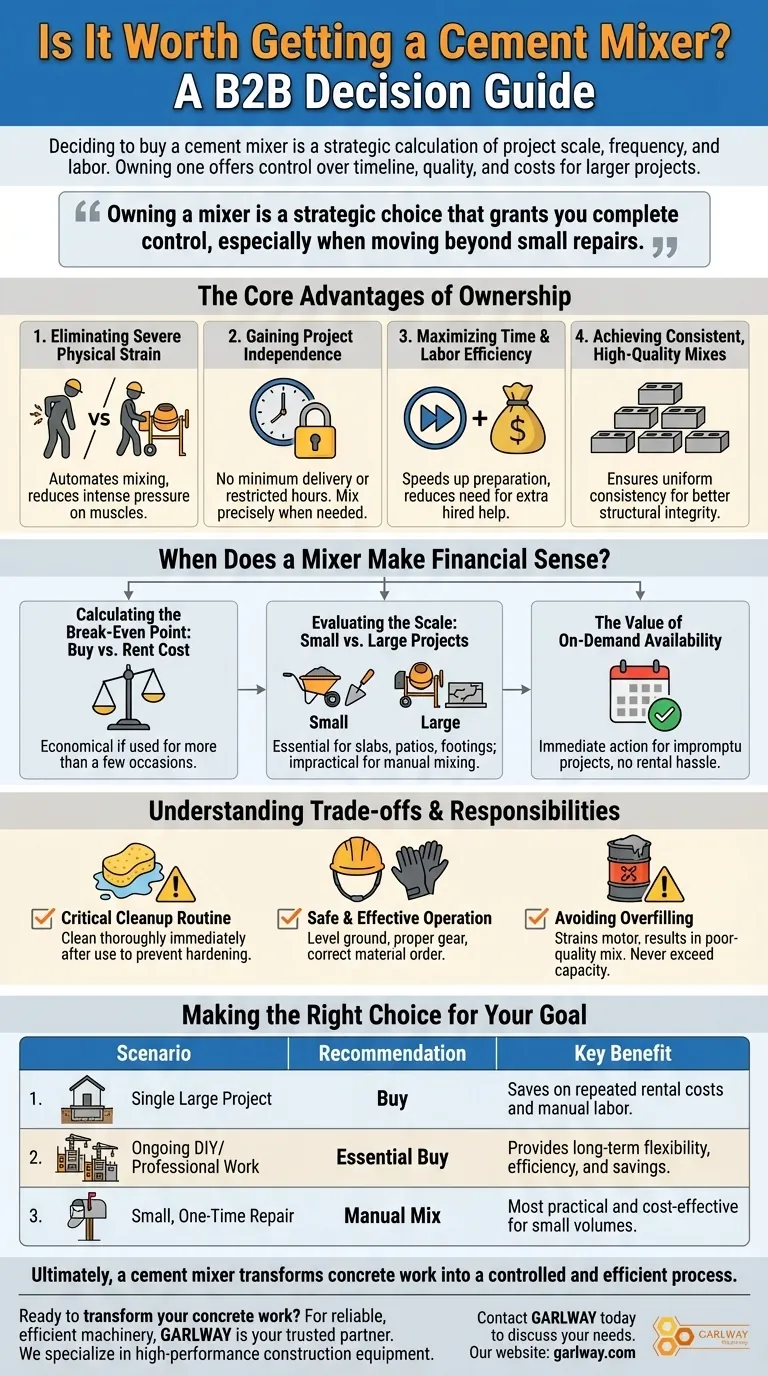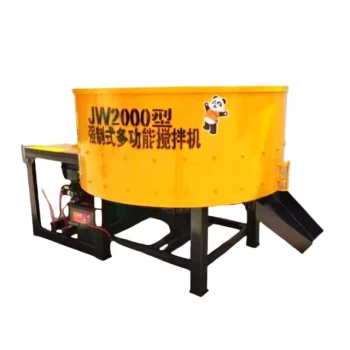Deciding whether to buy a cement mixer is a practical calculation of project scale, frequency, and your tolerance for physical labor. For anyone tackling large projects or frequently working with concrete, owning a mixer is a worthwhile investment that saves significant time, physical strain, and money compared to repeated rentals or manual mixing.
Owning a cement mixer is not just about convenience; it's a strategic choice that grants you complete control over your project's timeline, material quality, and labor costs, especially when moving beyond small, one-off repairs.

The Core Advantages of Ownership
Eliminating Severe Physical Strain
Manually mixing concrete is one of the most physically demanding construction tasks. A mixer automates this process entirely.
This eliminates the intense pressure on your back, shoulders, and other muscles, making the work far more comfortable and sustainable over the course of a project.
Gaining Project Independence
Owning a mixer frees you from dependency on ready-mix concrete suppliers.
You are no longer bound by their minimum delivery requirements or restricted working hours. This allows you to mix as much or as little as you need, precisely when and where your project demands it.
Maximizing Time and Labor Efficiency
A mixer dramatically speeds up the process of preparing concrete, allowing you to focus on placement and finishing.
This efficiency often reduces the need for extra hired help, directly saving on labor costs while accelerating your project's completion.
Achieving Consistent, High-Quality Mixes
A machine ensures every batch has a uniform consistency, which is crucial for the structural integrity and appearance of the final product.
Achieving this level of consistency by hand is difficult and often results in weaker, less durable concrete.
When Does a Mixer Make Financial Sense?
Calculating the Break-Even Point
The primary financial consideration is comparing the purchase price to the cost of renting. If you anticipate needing a mixer for more than a few separate occasions, buying one quickly becomes the more economical option.
Evaluating the Scale of Your Projects
For a simple post-hole repair requiring a single bag of concrete, manual mixing is sufficient.
However, for projects like pouring a small slab, a patio, or footings for a deck, a mixer becomes almost essential. The volume of material makes manual mixing impractical and inefficient.
The Value of On-Demand Availability
Ownership provides the ultimate convenience for impromptu projects or repairs. You can act immediately without the logistical hassle of scheduling and picking up a rental unit.
Understanding the Trade-offs and Responsibilities
The Critical Cleanup Routine
The single most important rule of mixer ownership is to clean it thoroughly immediately after every use.
Any concrete left to harden inside the drum will be extremely difficult to remove and can quickly render the machine useless.
Safe and Effective Operation
Always position the mixer on level ground in a well-ventilated area.
Wear appropriate protective gear, including safety glasses, gloves, and long sleeves. For best results, measure materials carefully and add them in the correct order—typically starting with water—to ensure a proper mix.
Avoiding Overfilling the Drum
Never fill the mixer beyond its recommended capacity. Overloading strains the motor and results in an incomplete, poor-quality mix.
Making the Right Choice for Your Goal
- If your primary focus is a single, large project (like a patio or shed foundation): Buying a mixer is often a smart move that saves you from the high cost of multiple rentals and the exhaustion of manual labor.
- If your primary focus is ongoing DIY work or professional contracting: A mixer is an essential tool that provides indispensable flexibility, efficiency, and long-term cost savings.
- If your primary focus is a small, one-time repair (like setting a mailbox post): The simplicity and low cost of mixing a few bags by hand in a wheelbarrow is the most practical choice.
Ultimately, a cement mixer is a powerful tool that transforms concrete work from a physical ordeal into a controlled and efficient process.
Summary Table:
| Scenario | Recommendation | Key Benefit |
|---|---|---|
| Single Large Project (e.g., patio, foundation) | Buy | Saves on repeated rental costs and manual labor. |
| Ongoing DIY/Professional Work | Essential Buy | Provides long-term flexibility, efficiency, and savings. |
| Small, One-Time Repair (e.g., mailbox post) | Manual Mix | Most practical and cost-effective for small volumes. |
Ready to transform your concrete work?
For construction companies and contractors seeking reliable, efficient machinery, GARLWAY is your trusted partner. We specialize in high-performance construction equipment, including durable concrete mixers, winches, and batching plants designed to maximize your project's efficiency and ROI.
Contact GARLWAY today to discuss your needs and discover the right equipment to power your success.
Visual Guide

Related Products
- HZS75 Concrete Batching Plant Cement Mixer Price Concrete Mixer Bunnings Mixing Plant
- JZC1000 Industrial Concrete Mixer Machine Cement Mixer Price
- Auto Concrete Cement Mixer Machine New
- Concrete Cement Mixer Machine Drum Mixer for Construction
- JDC350 Small Cement Concrete Mortar Mixer
People Also Ask
- What are the disadvantages of ready mixed concrete? Navigate Logistical & Cost Risks
- How much does a batching plant cost? Uncover the True Investment for Your Project
- Do you put water or cement in a cement mixer first? Master the Professional Layering Method
- What can you mix in a cement mixer? Unlock Its Full Potential for Concrete & Beyond
- Can you mix self leveling concrete in a cement mixer? Avoid Costly Flooring Mistakes



















